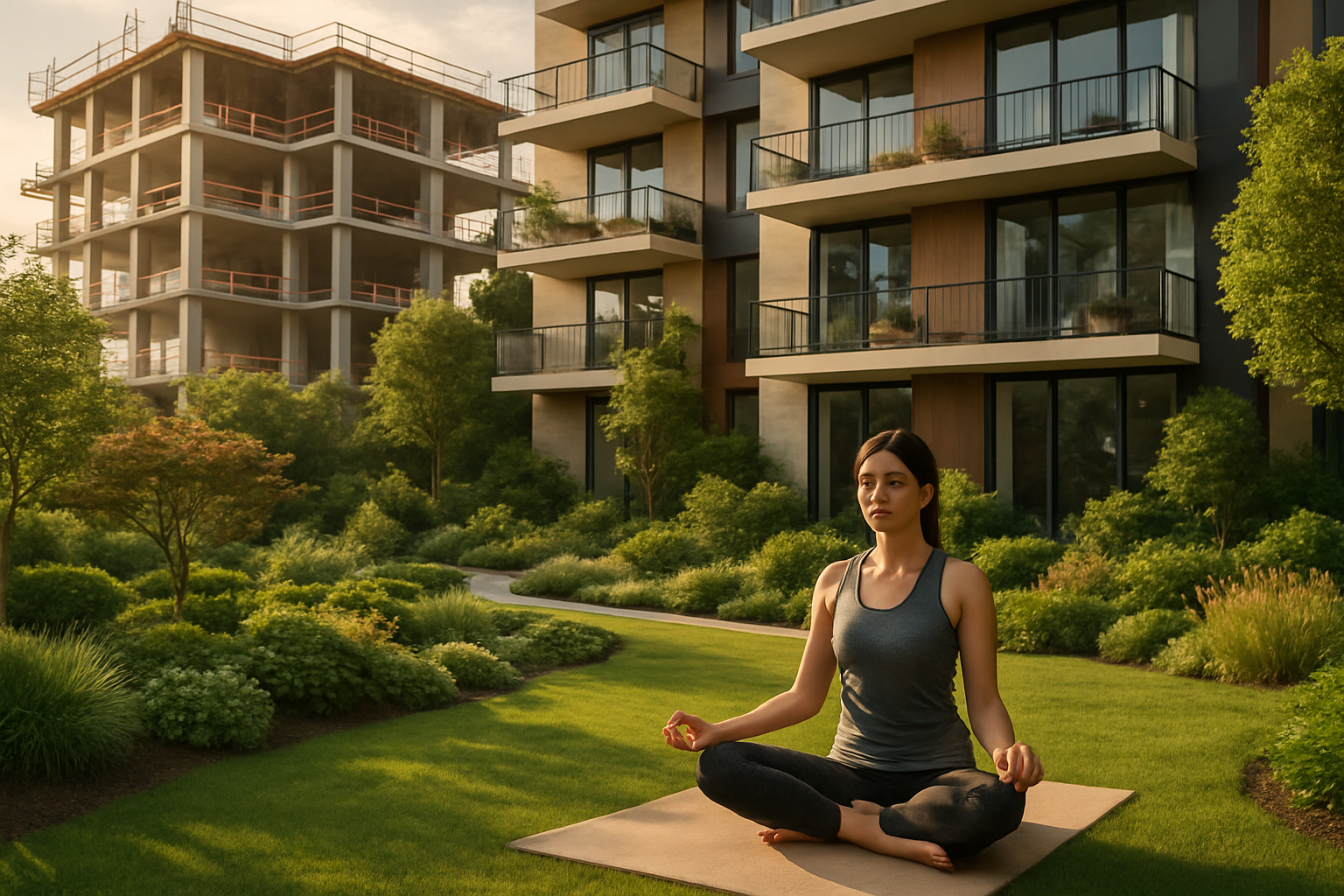Prefabricated Homes – Affordable and Efficient Housing Options with Fast Installation
Prefabricated homes represent a revolutionary approach to modern housing, offering homeowners a faster, more cost-effective alternative to traditional construction methods. These factory-built structures combine innovative manufacturing techniques with quality materials to deliver complete housing solutions in significantly less time than conventional building processes.

Prefabricated homes represent a significant shift in residential construction methodology, combining manufacturing efficiency with architectural innovation. Unlike traditional on-site construction, these homes are built in controlled factory environments before being transported to their final location for assembly. This approach offers numerous advantages, including reduced construction time, lower costs, and consistent quality control. As housing markets continue to face affordability challenges, prefab homes provide a practical solution that balances quality, aesthetics, and economic considerations.
What Are Prefabricated Homes and How Do They Work?
Prefabricated homes, often called prefab or modular homes, are dwellings manufactured off-site in sections or modules before being transported to their permanent location. The construction process begins in a factory setting where individual components are built according to predetermined specifications and building codes. These components—which may include entire rooms, wall panels, or structural elements—are then transported to the building site where they are assembled on a prepared foundation.
The manufacturing process employs assembly-line techniques similar to those used in automotive production. This standardization allows for precision engineering, reduced material waste, and quality consistency that can be difficult to achieve with traditional on-site construction. Modern prefab homes utilize computer-aided design (CAD) systems and automated machinery to ensure dimensional accuracy and structural integrity.
Once delivered to the site, professional installers connect the modules, complete utility hookups, and finalize exterior and interior details. This final assembly typically takes days or weeks rather than the months required for conventional construction, significantly reducing the overall project timeline.
Why Choose Efficient Prefabricated Homes Over Traditional Construction?
Efficiency stands as one of the primary advantages of prefabricated construction. The controlled factory environment eliminates weather-related delays and allows multiple phases of construction to occur simultaneously. While foundation work proceeds at the building site, the home itself is being manufactured in the factory, effectively compressing the construction schedule.
Environmental benefits also make prefab homes increasingly attractive. Factory construction typically generates 30-40% less waste than traditional building methods. Materials are precisely measured and cut, with scraps often recycled within the facility. Many prefab manufacturers incorporate sustainable materials and energy-efficient designs as standard features, including superior insulation, energy-efficient windows, and modern HVAC systems.
Cost predictability represents another significant advantage. Because prefab homes are built in controlled environments with standardized processes, cost overruns are less common than in traditional construction. Labor costs are typically lower due to efficient production methods and reduced construction time. Additionally, the accelerated building schedule means homeowners can move in sooner, potentially saving on temporary housing expenses or duplicate mortgage payments.
How Fast Can Prefabricated Homes Be Installed?
The installation speed of prefabricated homes represents one of their most compelling advantages. While traditional home construction often takes 6-12 months to complete, prefab homes can be manufactured and installed in as little as 3-4 months from order to occupancy. The actual on-site assembly typically ranges from a few days for simple modular designs to several weeks for more complex configurations.
Several factors influence installation timelines. Site preparation, including foundation work, utility connections, and permits, must be completed before the manufactured components arrive. Weather conditions can affect site work and final assembly, though to a much lesser extent than with traditional construction. The home’s size and complexity also impact timelines—larger custom designs naturally require more assembly time than smaller standard models.
The delivery logistics play a crucial role in the installation process. Transportation considerations, including route planning for oversized loads and scheduling of delivery vehicles, must be carefully coordinated. Most manufacturers provide experienced installation teams who work efficiently to complete the assembly according to precise specifications, ensuring structural integrity and proper finishing.
What Design Options Are Available for Modern Prefab Homes?
Today’s prefabricated homes have shed their once-limited design reputation to embrace architectural diversity and customization. Manufacturers offer everything from compact single-module dwellings to expansive multi-section homes with sophisticated floor plans. Contemporary designs feature open-concept layouts, high ceilings, large windows, and modern finishes that rival or exceed those found in conventionally built homes.
Exterior options have expanded dramatically, with choices including traditional siding, architectural panels, brick facades, and sustainable materials. Many manufacturers offer customizable roof styles, porches, decks, and garages to enhance curb appeal and functionality. Interior finishes can be selected from extensive catalogs featuring various flooring materials, cabinetry styles, countertop options, and fixture selections.
Technological integration has become increasingly important in modern prefab design. Many manufacturers incorporate smart home technology, energy management systems, and sustainable features as standard or optional elements. Custom designs can accommodate specific needs like accessibility modifications, multi-generational living arrangements, or specialized spaces for home businesses or creative pursuits.
Are Prefabricated Homes a Smart Investment in Today’s Market?
From a financial perspective, prefabricated homes often present a compelling investment case. The initial cost per square foot typically runs 10-25% less than comparable site-built homes, primarily due to manufacturing efficiencies and reduced labor costs. This cost advantage allows buyers to obtain more living space for their budget or to allocate savings toward premium features or better locations.
The real estate market increasingly recognizes the value of quality prefabricated homes. Modern prefab constructions that meet or exceed local building codes appreciate similarly to traditional homes in the same area, especially as public perception continues to shift away from outdated stereotypes. Financing options have also expanded, with many lenders now offering conventional mortgages for qualified prefabricated homes on permanent foundations.
Prefabricated Home Pricing and Provider Comparison
When considering a prefabricated home purchase, understanding the cost structure and available providers helps make informed decisions. The table below compares several established manufacturers based on their offerings and typical price ranges.
| Provider | Home Types | Size Range (sq ft) | Price Range (per sq ft) | Special Features |
|---|---|---|---|---|
| Clayton Homes | Modular, Manufactured | 1,000-2,500 | $60-$120 | Energy-efficient options, smart home technology |
| Champion Homes | Modular | 1,200-3,000 | $80-$160 | Custom floor plans, luxury finishes available |
| Method Homes | Modern Prefab | 800-2,400 | $180-$350 | Sustainable materials, LEED certification options |
| Blu Homes | Folding Technology | 600-3,200 | $195-$350 | Proprietary folding design, premium finishes |
| Deltec Homes | Round, Panelized | 800-3,500 | $175-$300 | Hurricane-resistant design, net-zero energy options |
Prices, rates, or cost estimates mentioned in this article are based on the latest available information but may change over time. Independent research is advised before making financial decisions.
Beyond the purchase price, potential homeowners should consider long-term cost implications. Prefabricated homes typically offer superior energy efficiency, potentially reducing utility costs by 20-30% compared to older conventional homes. Insurance costs generally align with those of traditional homes of similar value, though some insurers offer discounts for newer construction with modern safety features. Property taxes are assessed based on the completed home’s value, similar to traditional construction.
Prefabricated homes continue to evolve as a practical housing solution that balances affordability, efficiency, and design flexibility. As construction technology advances and consumer awareness grows, these factory-built dwellings are increasingly positioned as mainstream housing options rather than alternatives. For prospective homeowners seeking quality construction with predictable timelines and costs, prefabricated homes offer a compelling combination of value, efficiency, and contemporary design.




